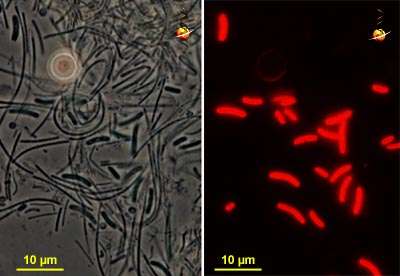Cryptomonas spp.
Algal Group: Cryptophytes (Cryptophyta)
Description
asymmetrical, oval-shaped cells; 15-40 µm; two flagella
Where we found it
Indian River and Suwannee Sound
Sebastian
DE;GJ;PI;HB;PR;SR
Frequency of occurrence
Indian River: 99% in 116 samples taken
Suwannee Sound: 100% in 120 samples taken
What Are The Effects On Clams?
Good
Why is it good?
acceptable food item for clams
Ecological considerations:
very common throughout Florida, but seldom found as major bloom-former
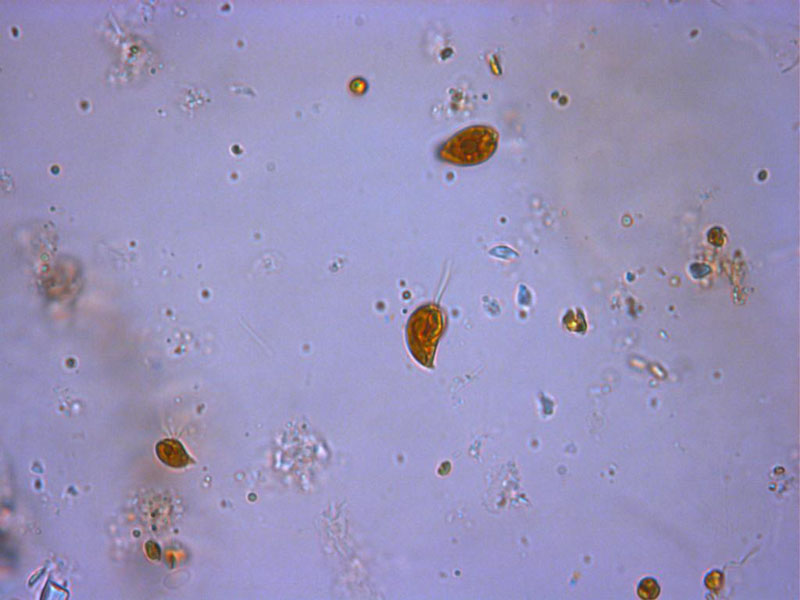
Lyngbya spp.
Algal Group: Cyanobacteria or Blue-Green Algae (Cyanophyta)
Description
cylindrical cells; can form filamentous colonies; filaments usually wider than 6 µm
Where we found it
Suwannee Sound
PI;SR
Frequency of occurrence
Indian River: 0% in 116 samples taken
Suwannee Sound: 1% in 120 samples taken
What Are The Effects On Clams?
Good; Bad
Why is it good?
acceptable food item for clams
Why is it bad?
Most planktonic forms are not harmful; however, some benthic forms, which have been found in the water column, have been associated with toxins (e.g., Lyngbya majuscula).
Ecological considerations:
Normally found in freshwater, but appears in brackish/coastal waters after heavy rainfall and freshwater discharge.
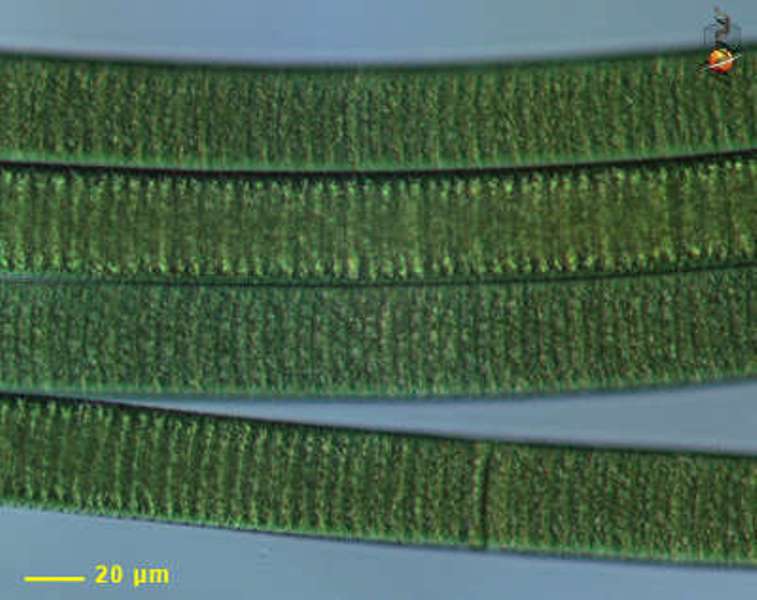
Merismopedia spp.
Algal Group: Cyanobacteria or Blue-Green Algae (Cyanophyta)
Description
spherical cells; 1-7 µm in diameter; form flat rectangular colonies
Where we found it
Indian River and Suwannee Sound
Sebastian
SR
Frequency of occurrence
Indian River: 3% in 116 samples taken
Suwannee Sound: 0% in 120 samples taken
What Are The Effects On Clams?
Good
Why is it good?
acceptable food item for clams
Ecological considerations:
Normally found in freshwater, but appears in brackish/coastal waters after heavy rainfall and freshwater discharge.
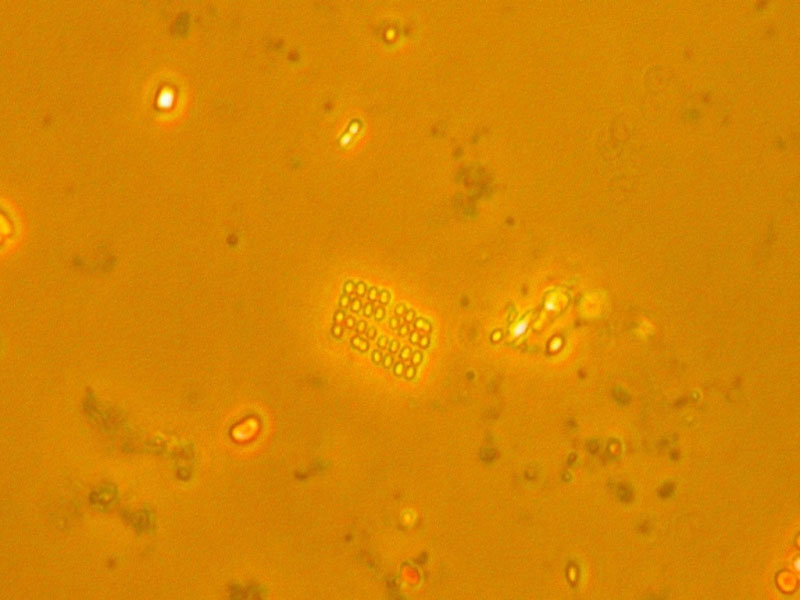
Microcystis spp.
Algal Group: Cyanobacteria or Blue-Green Algae (Cyanophyta)
Description
spherical cells; 1-6 µm in diameter; form irregularly shaped colonies
Where we found it
Suwannee Sound
DE;GJ;PI;HB;PR;SR
Frequency of occurrence
Indian River: 0% in 116 samples taken
Suwannee Sound: 26% in 120 samples taken
What Are The Effects On Clams?
Good; Bad
Why is it good?
acceptable food item for clams
Why is it bad?
Some of these species have been associated with the production of hepatotoxin, which can negatively affect the digestive system of animals. Toxicity of local strains has not been confirmed.
Ecological considerations:
Normally found in freshwater, but appears in brackish/coastal waters after heavy rainfall and freshwater discharge. Extreme bloom events can be associated with reduced oxygen levels in the water column.
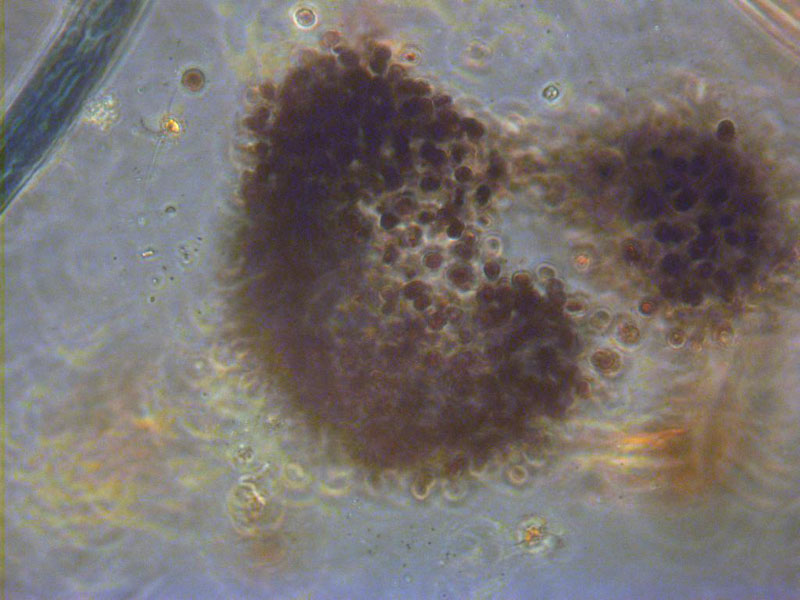
Oscillatoria spp.
Algal Group: Cyanobacteria or Blue-Green Algae (Cyanophyta)
Description
cylindrical cells; 2-15 µm diameter; can form filamentous colonies
Where we found it
Indian River and Suwannee Sound
Sebastian
SR
Frequency of occurrence
Indian River: 5% in 116 samples taken
Suwannee Sound: 0% in 120 samples taken
What Are The Effects On Clams?
Good
Why is it good?
acceptable food item for clams
Ecological considerations:
Normally found in freshwater, but appears in brackish/coastal waters after heavy rainfall and freshwater discharge.
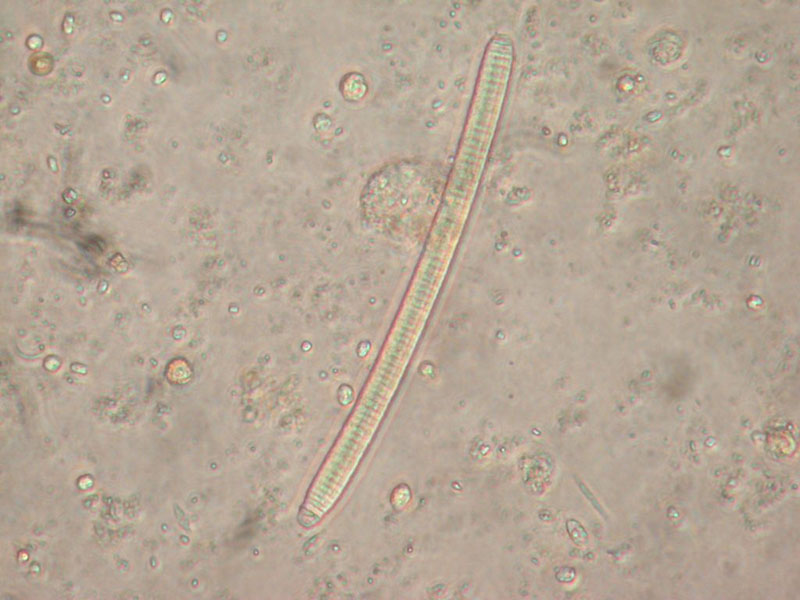
spherical picoplankton
Algal Group: Cyanobacteria or Blue-Green Algae (Cyanophyta)
Description
spherical cells; < 3 µm in diameter
Where we found it
Indian River and Suwannee Sound
Sebastian
DE;GJ;PI;HB;PR;SR
Frequency of occurrence
Indian River: 97% in 116 samples taken
Suwannee Sound: 100% in 120 samples taken
What Are The Effects On Clams?
Good; Bad
Why is it good?
acceptable food item for clams
Why is it bad?
Can be too small to be captured by clam gills.
Ecological considerations:
Very often numerically the most abundant algae. May not be as important in terms of biomass compared to diatoms or dinoflagellates, but can form major blooms.
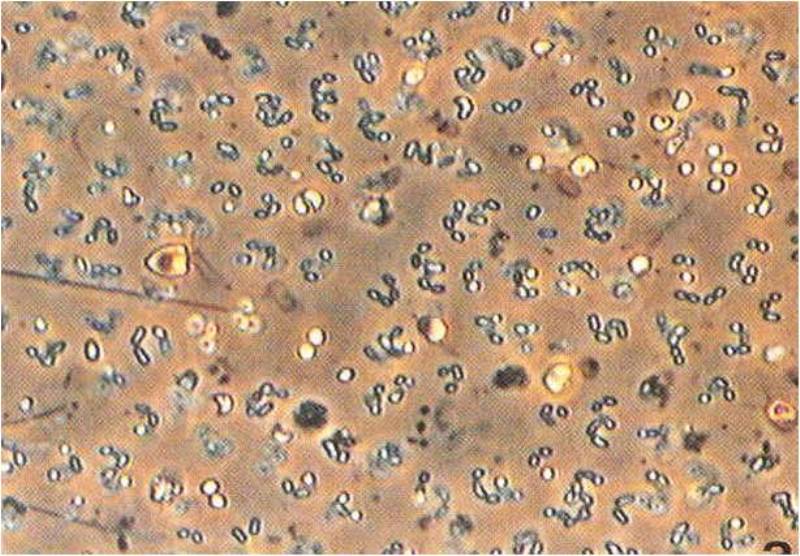
Synechococcus spp.
Algal Group: Cyanobacteria or Blue-Green Algae (Cyanophyta)
Description
oval-shaped cells; 1-3 µm wide, 5-10 µm long
Where we found it
Indian River
Sebastian
Frequency of occurrence
Indian River: 27% in 116 samples taken
Suwannee Sound: 0% in 120 samples taken
What Are The Effects On Clams?
Good; Bad
Why is it good?
acceptable food item for clams
Why is it bad?
Some species in this genus have been shown to produce amphidiniols, compounds with hemolytic (lyse red blood cells) properties, but reports from the natural environment are rare.
Ecological considerations:
Very often numerically the most abundant algae. May not be as important in terms of biomass compared to diatoms or dinoflagellates, but can form major blooms.
